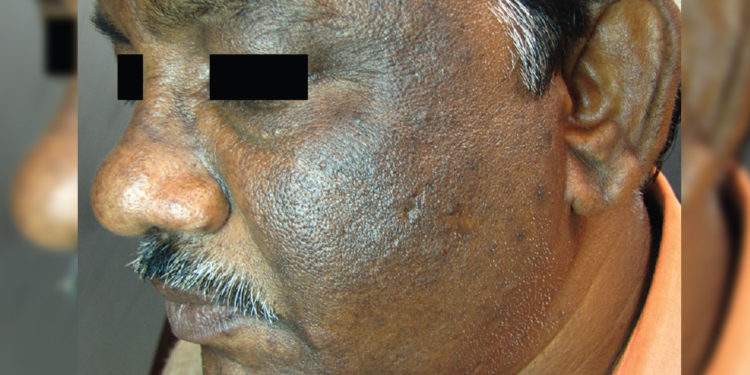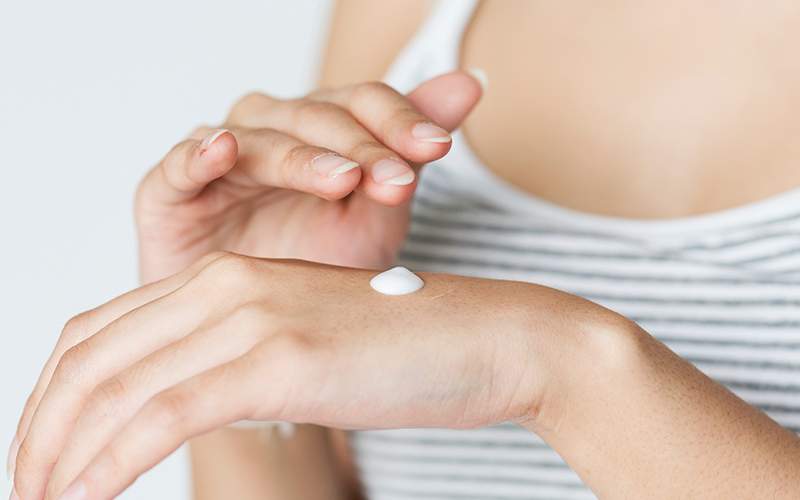Acanthosis Nigricans is one of the most prevalent skin conditions in Vizag. Multiple patients are seen suffering from this condition where a person’s skin turns darker in an ill-defined manner. As Dr. Jyothi, from JO! Skin Revive Clinic explains, this condition is very active in Vizag. In fact, she states that she sees at least 10 cases of Acanthosis Nigricans in the city every month. A high number of cases are being observed in children too. While this condition itself is not harmful to one’s health, Acanthosis Nigricans can be indicative of other underlying conditions which might be a cause for concern. Obesity has been identified as one of the primary causes of this condition.
It has been shown that Vizag has an obesity problem, primarily due to a lack of physical activity. The condition is more prevalent in houses with a history of diabetes. Also, the humidity and sun exposure in Vizag can aggravate Acanthosis Nigricans in an individual.
What is Acanthosis Nigricans?
Acanthosis Nigricans (AN) is also known as metabolic melanosis, metabolic melasma. It is characterised by brown to black pigmentation with ill-defined margins and with varying degrees of textural changes, ranging from mild roughness to frank verrucous appearance. Most commonly seen over the neck, it is also found around the face where it is classically seen in the zygomatic and malar regions. But other patterns are also seen such as:
#1 Horizontal band over the forehead, the band usually merges with the zygomatic pigmentation to form c shaped when seen on a lateral view
#2 Periorbital darkening. Sometimes the darkening is not only attributed to the pigmentation but also to the laxity, accentuated wrinkling, shadow effect.
#3 Perioral darkening
#4 Generalised pigmentation over the face
Other body sites such as groins, knuckles are also involved.
Types of Acanthosis Nigricans
#1 Obesity-associated acanthosis nigricans (pseudo-acanthosis nigricans)
#2 Medication associated acanthosis nigricans
#3 Syndromic acanthosis nigricans
#4 Auto-immune acanthosis nigricans
#5 Acral acanthosis nigricans (acral acanthotic anomaly)
#6 Unilateral acanthosis nigricans (nevoid acanthosis nigricans)
#7 Familial acanthosis nigricans
#8 Benign genetic acanthosis nigricans
#9 Mixed-type acanthosis nigricans
Acanthosis Nigricans and Obesity
Nowadays, cases of Acanthosis Nigricans have increased to an alarming state and the most common cause for this condition is obesity. The Body Mass Index (BMI) in such patients is found to be more than 24. Mothers of AN-positive children are likely to have abnormalities of metabolism compared with mothers of AN-negative children. Fathers of AN-positive children are more likely to have high blood glucose levels. It is suggested that screening children for AN is an effective strategy for identifying adults with prediabetes.
Most of the patients with Acanthosis Nigricans are found to have either clinical insulin resistance or sub-clinical insulin resistance. Hence the pigmentation in acanthosis nigricans is attributed to the thickening of the skin, increase in melanin and presence of large melanocytes.
There are steps to treating Acanthosis Nigricans. The first step is an evaluation which is done through a blood test. This test reveals the insulin resistance of the patient. Then, the patient is put on a medical as well as a procedural treatment to achieve the best outcome.
Evaluation
The first step in the evaluation of Acanthosis Nigricans should be the identification of the underlying condition. Certain basic studies need to be obtained, particularly in all overweight adults and children without a known history of insulin resistance like fasting insulin levels, HbA1c levels, fasting lipoprotein profile, fasting glucose, hemoglobin, and alanine aminotransferase.
Treatment of AN
A therapeutic approach can be employed which involves treatment of underlying disease or tumor, cessation/avoidance of the inciting agent in drug-induced AN, use of topical/oral agents and cosmetic modalities. Topical retinoid is considered the first-line treatment of AN.
Lifestyle modifications like weight-loss exercises have been shown to increase insulin sensitivity and reduce insulin levels causing improvement in obesity-associated AN. Correction of hyperinsulinemia reduces hyperkeratotic lesions.
Topical Treatment for AN:
#1 Retinoids
#2 Ammonium lactate and tretinoin
#3 Peels
#4 Calcipotriol
Oral Treatment
#1 Oral retinoids
#2 Metformin and rosiglitazone
#3 Cosmetic treatment
Even though it is mainly a disease of cosmetic concern, facial Acanthosis Nigricans can be a pointer to underlying metabolic syndrome, insulin resistance & prediabetic state. A thorough investigation and treatment are therefore mandatory to prevent long-term consequences from Acanthosis Nigricans.
Here are some preventative measures that people can take in order to stay away from Acanthosis Nigricans:
#1 Do at least 1 hour of physical activity to increase metabolism and decrease bodyweight.
#2 Maintain a proper daily diet, like having dinner at least 4 hours before going to sleep.
#3 Don’t consume Tobacco products.
Dr. Jyothi is a highly acclaimed and well-accomplished dermatologist, cosmetologist, dermatosurgeon and hair transplant surgeon working in JO! Skin Revive Clinic, Visakhapatnam. She is a gold medal holder for her academic excellence. She holds her MBBS degree from MGR University, MD degree from NTR university of health sciences and did her fellowship in cosmetology from the American Academy of Procedural Medicine, which made her a master in giving signature treatments.









Discussion about this post